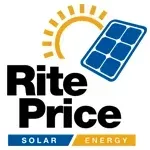FREQUENTLY ASKED
How Does Solar Power Work?
Solar power works by converting sunlight into electricity using solar panels. The electricity generated is direct current (DC), which is converted to alternating current (AC) by an inverter for use in your home. Excess energy can be stored in batteries or sent back to the grid.
Will Solar Power Work During a Power Outage?
Solar panels alone will not work during a power outage for safety reasons. However, if paired with a solar battery and a hybrid inverter, your system can provide backup power during outages.
Can Solar Power Run an Air Conditioner?
Yes, solar power can run an air conditioner, provided your system is sized appropriately to handle the energy demand. Air conditioners require significant power, so adequate panel and inverter capacity is essential.
What Solar Power System Do I Need?
The size of your solar system depends on your energy usage, roof space, and goals (e.g., reducing bills or achieving energy independence). Most households in Adelaide opt for 6.6 kW to 10 kW systems.
Are Solar Batteries Worth It?
Yes, solar batteries are worth it if you want to store excess energy for night use, reduce reliance on the grid, or have backup power during outages. They’re especially beneficial in areas with low feed-in tariffs.
Will Solar Power Work on Cloudy Days?
Yes, solar panels still generate electricity on cloudy days, though at a reduced capacity. Advanced panels like Canadian Solar or Jinko Tiger Neo are designed to perform well even in low-light conditions.
Who Invented Solar Power?
The photovoltaic effect, which solar panels use to generate electricity, was discovered by French scientist Edmond Becquerel in 1839. The first modern solar panel was developed by Bell Labs in 1954.
How Long Do Solar Panels Last?
Most solar panels have a lifespan of 25–30 years. Their efficiency may slightly decrease over time, but they will continue to generate electricity well beyond their warranty period.
What Is the Difference Between a Solar Inverter and a Hybrid Inverter?
A solar inverter converts DC electricity from panels to AC for home use. A hybrid inverter does this and also manages battery storage, enabling energy use during outages.
Are Solar Panels Worth the Investment?
Yes, solar panels are worth the investment. They reduce electricity bills, increase energy independence, and often pay for themselves within 4–7 years, depending on system size and usage.
Can Solar Power My Entire Home?
Yes, solar can power your entire home if your system is appropriately sized and paired with a battery to store excess energy for night use.
What Happens to Excess Solar Energy?
Excess solar energy can be exported to the grid for a feed-in tariff or stored in a solar battery for later use, such as during the night or outages.
Do I Need Council Approval for Solar Panels?
Most residential solar installations do not require council approval, but it’s always best to check with local regulations or your installer.
Are Solar Panels Environmentally Friendly?
Yes, solar panels are environmentally friendly. They reduce reliance on fossil fuels, lower greenhouse gas emissions, and generate clean, renewable energy.
What Is the Warranty on Solar Panels?
Most solar panels come with a 10–12 year product warranty and a 25-year performance warranty, ensuring long-term reliability and efficiency.
How Much Does a Solar System Cost?
The cost of a solar system depends on its size and components. In Adelaide, a 6.6 kW system costs between $4,500 and $8,000, while larger systems may cost more.
Can Solar Panels Be Installed on All Roof Types?
Solar panels can be installed on most roof types, including tile, tin, and flat roofs. Some roof designs may require additional mounting equipment.
How Do I Maintain My Solar Panels?
Solar panels require minimal maintenance. Cleaning them 1–2 times a year to remove dirt and debris will help maintain efficiency. Professional inspections every few years are recommended.
What Is the Tesla Powerwall?
The Tesla Powerwall is a home battery that stores solar energy for night use and provides backup power during outages. It offers 13.5 kWh of usable capacity and integrates with the Tesla app for smart energy management.
How Long Does It Take to Install a Solar System?
Installing a solar system typically takes 1–2 days, depending on the system size and roof complexity. Approval processes may take additional time before installation.
